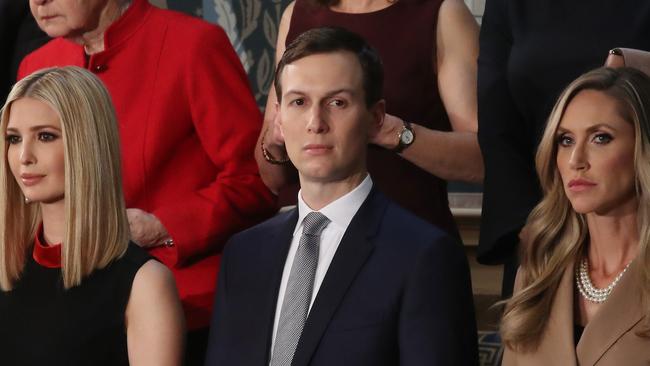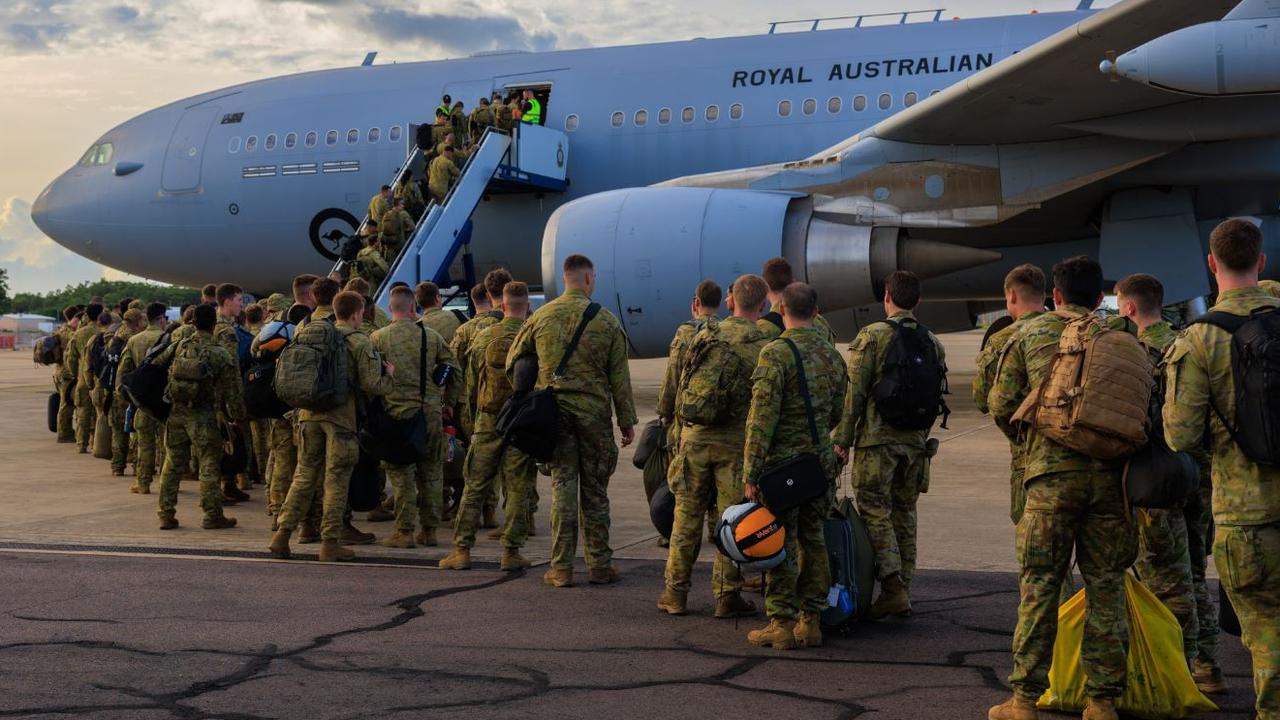Abbas orchestrating violence against peace plan, says Jared Kushner
Jared Kushner blames Palestinian President Mahmoud Abbas for soaring violence in the West Bank since his peace plan’s release.

The chief architect of the US blueprint to resolve the decades-old conflict between Israelis and Palestinians on Friday blamed Palestinian Authority President Mahmoud Abbas for soaring tensions and violence in the West Bank since the plan’s release last week.
Jared Kushner, the son-in-law and adviser to President Donald Trump who spent three years working on the plan, said leaders who are ready for a state “don’t call for days of rage and encourage their people to pursue violence if they’re not getting what they want”.
He said he thought Mr Abbas “was surprised with how good the plan was for the Palestinian people, but he locked himself into a position” by rejecting it before it came out.
Mr Abbas was going to different forums and putting forward old talking points when the situation on the ground had changed and “this might be the last chance that they have to actually resolve it in a good way,” Mr Kushner said.

Mr Abbas is to address the UN Security Council on Wednesday and then appear at a news conference with former Israeli Prime Minister Ehud Olmert, an opponent of the US plan who was forced to resign a decade ago ahead of a corruption indictment that sent him to prison for 16 months.
Mr Kushner called Mr Olmert’s appearance “almost pathetic”. Leaders who had their chances and failed should be encouraging other people’s efforts in trying to make peace, “as opposed to trying to grab a headline when you’re irrelevant and try … to get involved in a situation to get some attention,” he said. “It comes from a lot of jealousy that they couldn’t get it done themselves.”
After briefing the UN Security Council, Mr Kushner said the US proposal may be the last chance because the rate of expansion of Israeli settlements may preclude a contiguous Palestinian state.
Right now, Mr Kushner said, “it’s very, very difficult to have a contiguous state where you can drive from the top to the bottom”.
“If you look at the rate of expansion of Israeli settlements and if you look at the aspirations of the Palestinian people you’re about to get to a crossroad where you almost can’t come back,” he said.
Mr Kushner said the 180-page plan “was what we got Israel to agree to” and the most constructive thing the Palestinians could do was to sit down with the Israelis and go over it “line by line”.
“If they would like to meet, we’re happy to do it, but we’re not going to chase them,” he said.
The US plan, unveiled by Mr Trump with Israeli Prime Minister Benjamin Netanyahu at the White House on January 28, envisions a disjointed Palestinian state that turns over key parts of the West Bank to Israel, siding with Israel on contentious issues including borders and the status of Jerusalem and Jewish settlements.
The Palestinians seek all of the West Bank and east Jerusalem — areas captured by Israel in the 1967 Mideast war — for an independent state and the removal of many of the more than 700,000 Israeli settlers from these areas. But under terms of the “peace vision” that Mr Kushner oversaw, all Israeli settlers would remain in place, and Israel would retain sovereignty over all of its settlements as well as the strategic Jordan Valley.
The proposed Palestinian state would be demilitarised and give Israel overall security control. In addition, the areas of east Jerusalem offered to the Palestinians for a capital consist of neighbourhoods located behind a concrete separation barrier.
Mr Kushner, who will continue to oversee the peace plan, said he and his team would follow up with the announcement soon that a US-Israeli commission is being established to turn its “conceptual map” into a detailed map with the goal of making sure “you can have contiguous territory” for a Palestinian state. It could take “a couple of months” for technical teams to come up with a map, he said, and during that time he and his team plan to consult with European and Middle Eastern governments to explain the plan.
Mr Kushner said “there’s a ton of cracks” in European unity on the US proposal. “The European Union was not able to get a consensus statement on this, which shows that there’s a lot of people … interested in working on a new approach, which is good,” he said.
In the Arab world, he said, “you saw a wide range of statements. A lot of people put out neutral statements, which is good. You saw people put out supportive statements, which was good. And you saw very few critical statements, which I thought was very interesting”.
AP



To join the conversation, please log in. Don't have an account? Register
Join the conversation, you are commenting as Logout